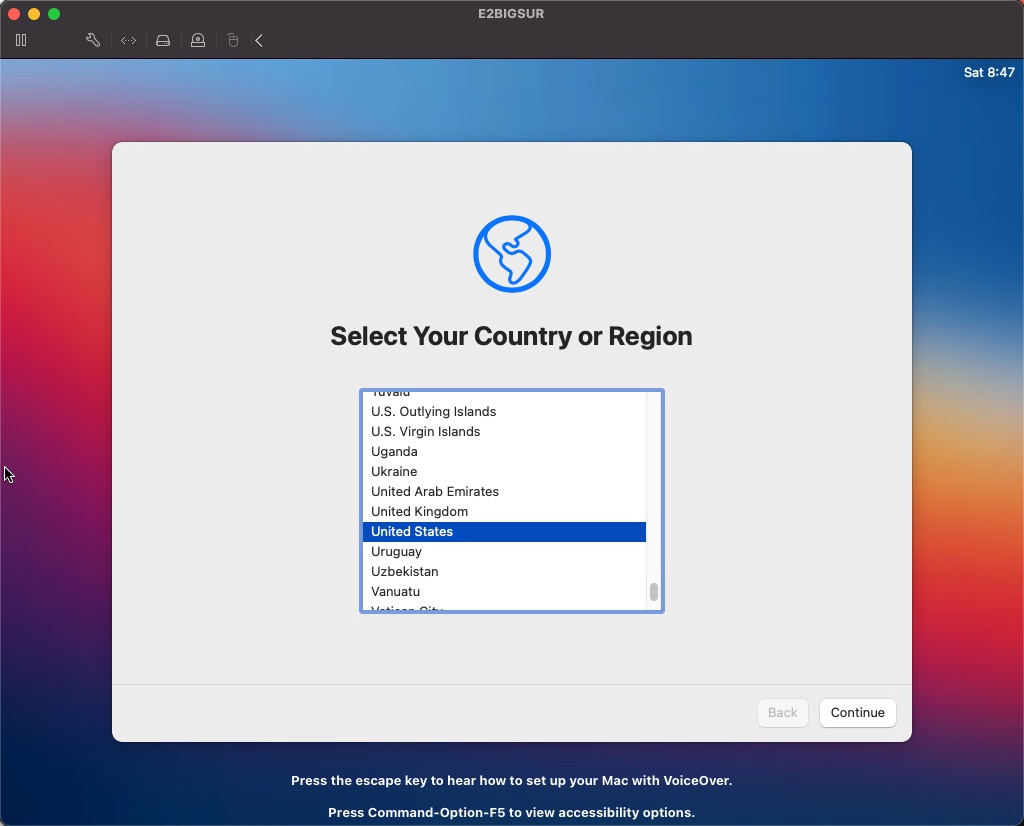
- Running mac os on vmware esxi install#
- Running mac os on vmware esxi drivers#
- Running mac os on vmware esxi update#
- Running mac os on vmware esxi software#
When ordering a subnet, please make sure include a note that you want to use it for ESXi and it should be routed on the additional single IP.

Running mac os on vmware esxi install#
Running mac os on vmware esxi drivers#
Running mac os on vmware esxi update#
The Realtek driver present in ESXi 5.0 to 5.1 Update 2 was just a tech demo that has not been updated.Please look for current information on your own to make sure they're compatible. However, newer versions are not necessarily compatible. The models mentioned above should work with the appropriate version.Starting from 5.5, Update 3 / 6.0, Update 2ĥ.0 - 5.1 Update 2 since 5.5, additional NIC required Starting from 6.5, Update 2 / 6.7, Update 1 Starting from 6.5a, additional Intel NIC required (All information is subject to change) Model group DX180 and DX181 are compatible from 6.5 onwards.Īll other models are not certified by VMware, but in most cases, you can run them with VMware vSphere/ESXi. DX152 and DX292 are compatible from 6.0 onwards. The Dell PowerEdge models DX150, DX151, DX290, DX291 and DX141 are certified and compatible with all versions from 5.0 onwards. Hetzner specific information Installed hardware After selecting this, you can click on the Edit button to the right and then enter the license key.

Running mac os on vmware esxi software#
Go to the Configuration tab, the Software section, and then choose Licensed functions in the menu.

If you want to use the OS for the long term, you need to get a separate (free) license. Please check out the Installation Guide for further information on installing ESXi.Īfter installation, the system has a test license which expires after 60 days.

The installation and configuration of ESXi takes about 20-30 minutes, even without any prior knowledge.To use a subnet, you need to set up an additional single IP as a router VM.Therefore, you can only use a true bridged setup. VMware vSphere Hypervisor is an operating system designed for pure virtualization and supports neither NAT nor routing.The free version of ESXi (starting with 5.5) supports a maximum of 4 TB RAM (formerly 32 GB RAM).Software RAID is not supported by ESXi.VMware vSphere Hypervisor 5.x and 6.0 (ESXi) use a filesystem called vmfs5 (formerly vmfs3), which uses GPT and supports drive sizes of up to 64 TiB (formerly 2 TiB).Created on General information Hardware.


 0 kommentar(er)
0 kommentar(er)
